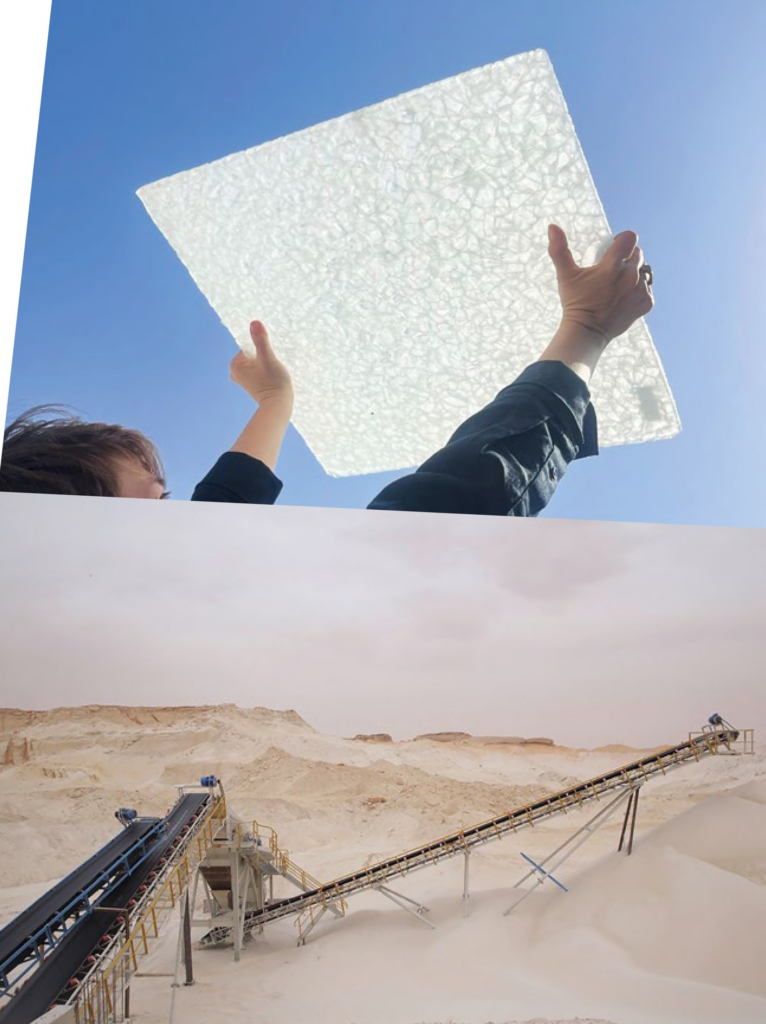ANNE HOLTROP
Born 1977 in Tiel, The Netherlands, lives and works in Muharraq, Bahrain and Amsterdam, The Netherlands
Glass to Stone
2024

Anne Holtrop studied architecture at the Academy of Architecture, Amsterdam University of the Arts and founded his own studio in 2009, developing a reputation early on with explorations of form and material in projects like Trail House (2009) and Batara (2013). After winning the competition to design the Bahrain Pavilion at the Milan Expo 2015, Holtrop set up an office in Muharraq, Bahrain. He has subsequently been involved in numerous cultural projects in the Arabian Gulf, most notably the UNESCO-listed Bahrain Pearling Path projects and the Misk Art Institute in Riyadh—exploring novel means to use standard construction materials. Holtrop is also a professor of architecture at ETH Zurich.
Glass to Stone (2024) is a work commissioned for the 2024 Diriyah Contemporary Art Biennale. The three-meter-high and five-meter-wide wall-like structure has a steel tubing framework, which supports fifteen overlapping panels of fused glass on one side. Both a sculptural installation and material study, the work is a continuation of Holtrop’s exploration of glass, which began with prototypes for his design of the curtain wall façade for Misk Art Institute. Holtrop is interested in exploring the reuse of waste glass products as a means of enhancing sustainability through advances in glass technology, a particularly relevant building material for Saudi Arabia due to the availability of fine sand.
For his installation at the Biennale, he collaborated with regional glass manufacturers to create panels made of fused, recycled glass. In this process, shards of waste container glass, originating both from production and waste facilities, were layered in reusable metal molds and then fired in a kiln. Holtrop experimented with different sized shards and temperatures of the kiln to achieve a range in visual effects. Holtrop’s recent work with glass is characteristic of his experiments with materials and aesthetics and his implementation of building materials to convey the feel and texture of natural surfaces. The opaqueness of the panels creates a soft, filtered light. Over the course of the day the wall creates shifting impressions due to the way the glass diffuses the sunlight: in early morning it mimics salt crystals on coastal flats; at noon, ice crystals in frozen water; and at sunset it has a warm reddish glow.
